Key Takeaways
1. Data Science: Informed Decisions Beyond Intuition
As humans, our judgements are constrained by limited, subjective experiences and incomplete knowledge.
Overcoming Human Limitations. Data science offers a powerful alternative to relying solely on human judgment, which can be biased and limited. By leveraging data, we can identify hidden trends, make predictions, and compute probabilities, leading to more accurate and informed decisions. This is especially crucial in fields like medicine, where misdiagnosis can have severe consequences.
Harnessing Data's Power. Data science techniques enable us to analyze vast datasets and extract valuable insights that would be impossible to discern through intuition alone. Modern computing and advanced algorithms allow us to:
- Identify hidden trends in large datasets
- Leverage trends to make predictions
- Compute the probability of each possible outcome
- Obtain accurate results quickly
A Practical Approach. This book provides a gentle introduction to data science, focusing on intuitive explanations and real-world examples. By understanding the fundamental concepts and algorithms, readers can begin to leverage the strengths of data science to make better decisions in their own fields.
2. Data Preparation: The Bedrock of Reliable Analysis
If data quality is poor, even the most sophisticated analysis would generate only lackluster results.
Garbage In, Garbage Out. The quality of data is paramount in data science. No matter how advanced the algorithms used, if the data is flawed or incomplete, the results will be unreliable. Data preparation is therefore a critical step, involving cleaning, transforming, and selecting the right data for analysis.
Key Data Preparation Steps:
- Data Formatting: Organizing data into a tabular format with rows representing observations and columns representing variables.
- Variable Types: Identifying and distinguishing between binary, categorical, integer, and continuous variables.
- Variable Selection: Shortlisting the most relevant variables to avoid noise and improve computation speed.
- Feature Engineering: Creating new variables by combining or transforming existing ones to extract more useful information.
- Handling Missing Data: Addressing missing values through approximation, computation, or removal, while being mindful of potential biases.
Ensuring Data Integrity. Proper data preparation ensures that the analysis is based on a solid foundation, leading to more accurate and meaningful results. It's an investment that pays off in the form of reliable insights and better decision-making.
3. Algorithm Selection: Matching Tools to Tasks
The choice of algorithm depends on the type of task we wish to perform.
Choosing the Right Tool. Selecting the appropriate algorithm is crucial for achieving the desired outcome in data science. Different algorithms are designed for different tasks, such as finding patterns, making predictions, or continuously improving performance based on feedback. The three main categories of tasks are:
- Unsupervised Learning: Discovering hidden patterns in data without prior knowledge.
- Supervised Learning: Making predictions based on pre-existing patterns in labeled data.
- Reinforcement Learning: Continuously improving predictions using feedback from results.
Understanding Algorithm Categories. Unsupervised learning algorithms, like clustering and association rules, are used to explore data and identify underlying structures. Supervised learning algorithms, such as regression and classification, are used to build predictive models based on labeled data. Reinforcement learning algorithms, like multi-armed bandits, are used to optimize decisions over time through trial and error.
Beyond the Basics. In addition to the main tasks they perform, algorithms also differ in their ability to analyze different data types and the nature of the results they generate. Careful consideration of these factors is essential for selecting the most suitable algorithm for a given problem.
4. Parameter Tuning: Optimizing Model Performance
A model’s accuracy suffers when its parameters are not suitably tuned.
Fine-Tuning for Accuracy. Even with the right algorithm, the accuracy of a model can vary significantly depending on how its parameters are tuned. Parameters are settings that control the behavior of an algorithm, and finding the optimal values for these parameters is crucial for maximizing performance.
Avoiding Overfitting and Underfitting. Overfitting occurs when a model is too sensitive to the training data and performs poorly on new data. Underfitting occurs when a model is too insensitive and fails to capture the underlying patterns in the data. Parameter tuning helps to strike a balance between these two extremes.
Regularization and Validation. Regularization is a technique used to prevent overfitting by penalizing model complexity. Validation is a process used to assess how well a model generalizes to new data. By combining parameter tuning, regularization, and validation, we can build models that are both accurate and reliable.
5. Clustering: Discovering Hidden Groups
By identifying common preferences or characteristics, it is possible to sort customers into groups, which retailers may then use for targeted advertisement.
Grouping Similar Data Points. Clustering is a technique used to group similar data points together based on their characteristics. This can be useful for identifying customer segments, understanding product categories, or discovering hidden patterns in data. K-means clustering is a popular algorithm that aims to partition data into k distinct clusters.
Determining the Number of Clusters. One of the key challenges in clustering is determining the optimal number of clusters. A scree plot can be used to visualize how within-cluster scatter decreases as the number of clusters increases, helping to identify a suitable number of clusters.
Iterative Process. K-means clustering works by iteratively assigning data points to the nearest cluster center and then updating the position of the cluster centers. This process continues until there are no further changes in cluster membership. While k-means clustering is simple and efficient, it works best for spherical, non-overlapping clusters.
6. PCA: Simplifying Complexity Through Dimension Reduction
Principal Component Analysis (PCA) is a technique that finds the underlying variables (known as principal components ) that best differentiate your data points.
Reducing the Number of Variables. Principal Component Analysis (PCA) is a dimension reduction technique that allows us to express data with a smaller set of variables called principal components. Each principal component is a weighted sum of the original variables, capturing the most important information in the data.
Maximizing Data Spread. PCA identifies the dimensions along which data points are most spread out, assuming that these dimensions are also the most useful for differentiation. The top principal components can be used to improve analysis and visualization, making it easier to understand complex datasets.
Scree Plots and Limitations. A scree plot can be used to determine the optimal number of principal components to retain. While PCA is a powerful technique, it assumes that the most informative dimensions have the largest data spread and are orthogonal to each other. It can also be challenging to interpret the generated components.
7. Association Rules: Uncovering Relationships in Data
Association rules reveal how frequently items appear on their own or in relation to each other.
Discovering Purchasing Patterns. Association rules are used to uncover relationships between items in a dataset, such as identifying products that are frequently bought together. This information can be used to improve sales through targeted advertising, product placement, and product bundling.
Measuring Association. There are three common ways to measure association:
- Support: Indicates how frequently an item appears.
- Confidence: Indicates how frequently item Y appears when item X is present.
- Lift: Indicates how frequently items X and Y appear together, while accounting for how frequently each would appear on its own.
Apriori Principle. The apriori principle accelerates the search for frequent itemsets by pruning away a large proportion of infrequent ones. This helps to reduce the computational complexity of finding association rules in large datasets.
8. Social Network Analysis: Mapping and Understanding Connections
Social network analysis is a technique that allows us to map and analyze relationships between entities.
Analyzing Relationships. Social Network Analysis (SNA) is a technique used to map and analyze relationships between entities, such as people, organizations, or countries. This can be useful for understanding social dynamics, identifying influential individuals, and discovering communities.
Louvain Method. The Louvain method identifies clusters in a network in a way that maximizes interactions within clusters and minimizes those between clusters. It works best when clusters are equally sized and discrete.
PageRank Algorithm. The PageRank algorithm ranks nodes in a network based on their number of links, as well as the strength and source of those links. While this helps us to identify dominant nodes in a network, it is also biased against newer nodes, which would have had less time to build up substantial links.
9. Regression Analysis: Predicting Trends and Relationships
Regression analysis finds the best-fit trend line that passes through or sits close to as many data points as possible.
Finding the Best-Fit Line. Regression analysis is a technique used to find the best-fit trend line that passes through or sits close to as many data points as possible. This trend line can be used to predict the value of a dependent variable based on the values of one or more independent variables.
Regression Coefficients. A trend line is derived from a weighted combination of predictors. The weights are called regression coefficients, which indicate the strength of a predictor in the presence of other predictors.
Limitations and Assumptions. Regression analysis works best when there is little correlation between predictors, no outliers, and when the expected trend is a straight line. It's important to be aware of these limitations when interpreting the results of a regression analysis.
10. k-NN and Anomaly Detection: Finding the Unusual
The k -Nearest Neighbors (k -NN) technique classifies a data point by referencing the classifications of other data points it is closest to.
Classifying by Proximity. The k-Nearest Neighbors (k-NN) technique classifies a data point by referencing the classifications of other data points it is closest to. The value of k, the number of neighbors to reference, is determined via cross-validation.
Parameter Tuning and Limitations. k-NN works best when predictors are few and classes are about the same size. Inaccurate classifications could nonetheless be flagged as potential anomalies.
Anomaly Detection. k-NN can also be used to identify anomalies, such as fraudulent transactions or unusual patterns in data. By identifying data points that deviate significantly from the norm, we can gain valuable insights and detect potential problems.
11. SVM: Optimal Boundaries for Classification
Support Vector Machine (SVM) classifies data points into two groups by drawing a boundary down the middle between peripheral data points (i.e. support vectors ) of both groups.
Drawing Boundaries. Support Vector Machine (SVM) classifies data points into two groups by drawing a boundary down the middle between peripheral data points (i.e., support vectors) of both groups.
Resilience and Efficiency. SVM is resilient against outliers as it uses a buffer zone that allows a few data points to be on the incorrect side of the boundary. It also employs the kernel trick to efficiently derive curved boundaries.
Best Use Cases. SVM works best when data points from a large sample have to be classified into two distinct groups. It's a powerful technique for a variety of classification problems.
12. A/B Testing and Multi-Armed Bandits: Optimizing Choices
The multi-armed bandit problem deals with the question of how to best allocate resources—whether to exploit known returns, or to search for better alternatives.
Resource Allocation. The multi-armed bandit problem deals with the question of how to best allocate resources—whether to exploit known returns or to search for better alternatives.
A/B Testing vs. Epsilon-Decreasing. One solution is to first explore available options before allocating all remaining resources to the best-performing option. This strategy is called A/B testing. Another solution is to steadily increase resources allocated to the best-performing option over time. This is known as the epsilon-decreasing strategy.
Trade-offs and Limitations. While the epsilon-decreasing strategy gives higher returns than A/B testing in most cases, it is not easy to determine the optimal rate to update the allocation of resources. Careful consideration of the trade-offs is essential for making informed decisions.
Last updated:
Review Summary
Numsense! Data Science for the Layman receives high praise for its accessibility and clarity in explaining complex data science concepts without heavy mathematics. Readers appreciate its concise overview, helpful visuals, and practical examples. The book is recommended for beginners and as a refresher for those with some experience. While some find it oversimplified, most value its ability to demystify data science algorithms. A few reviewers note limitations due to the lack of mathematical depth and color-dependent illustrations, but overall, it's considered an excellent introduction to the field.
Similar Books
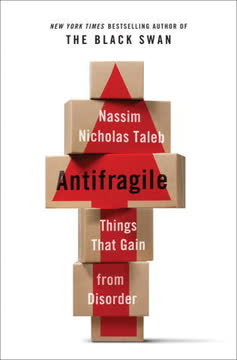

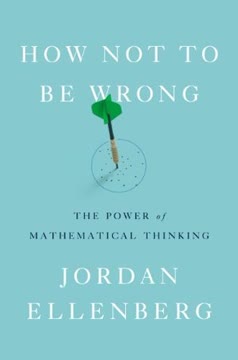
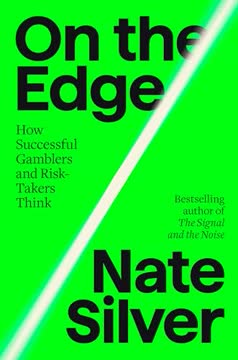



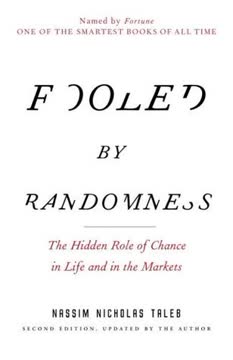
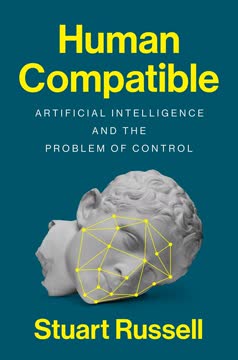

Download PDF
Download EPUB
.epub digital book format is ideal for reading ebooks on phones, tablets, and e-readers.




